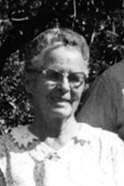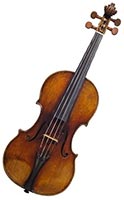Early History of Riverdale, Idaho ~ Index

Riverdale was so named because of the hills forming a dale along the river. The little valley was first called Hansens Bottom. Owing to the fact that a man by the name of Neal Hansen kept a herd of cattle along the river during the summer months. The entire valley was covered with a luxuriant growth of meadow grasses, which made it a very desirable location for home seekers.
Julius Anderson and his mother lived in an improvised hut with a willow bowery in front for shade. This stood on the river bank near what is called the Davis Ford on the west edge of the property now owned by Don Carter. These people stayed there two summers and kept a small heard of cattle, this would have been about 1878 and 1879. (Information from Mrs. Rhoda Nelson Davis.)
During the summer of 1877 Nick Wilson, author of the book The White Indian Boy moved with his family from Oxford, and camped near the spring which furnishes water for the Taylor Nelson home. (Testimony of Edmond Nelson.) The first house in the valley was built by Edmond Nelson, it was located near the site where the Angela Nelson Packer home first stood. (This has since been moved about five-hundred feet northwest where it stands today.) He and his family lived there until 1880 when he sold his land to James Barrington.
The next house was erected by Edmonds brother, Joseph S. Nelson. It stood about fifty feet east of the house (1955) now owned by John B. Youngman. It is impossible to establish the exact date when these houses were built by the Nelson brothers. But fortunately, we do have the date when the ditch bringing water from Bear River on to their land was completed.
This date taken from the Nelson family history, was the 10th of June, 1880. Their older brother, William G. Nelson assisted them in building this canal while his family was living at Franklin, Idaho with the crude implements these men used in constructing the ditch it is certain that it would have required at least two summers to complete the work. Especially in view of the fact that a wooden flume about eight-hundred feet in length was part of the building project. (This canal is credited with being the first in Cache Valley to take irrigation water from Bear River.)
In consideration of these facts it would seem probable that the homes were built not later than 1877. This would have been fourteen years after the Indian War at Battle Creek. William G. Nelson purchased the land owned by his brother Joseph S. Nelson, the fall of 1878 and moved his family into the house on the 18th of January 1879.

The only other families living in the valley at that time was George Davis, William T. Van Noy and Mr. Morrison. (Information from the William G. Nelson journal.) Joseph S. Nelson then located in the upper end of the valley on the Mink Creek side of the river where he built a house. This was later sold to William W. Walker, where he lived until his death many years later.
William T. Van Noy built the house now occupied by the Adolph Spatig family (1955). The William T. Van Noy was first sold to his son, Nathaniel Van Noy, who sold it to Thomas Edward Walker and who sold to John Hill, who sold to Andrew C. Bosen who sold to Mr. Spatig.
William T. Van Noy was a carpenter, cabinet builder and blacksmith, the building housing his blacksmith shop stood by the roadside in front of his house. He operated this shop for a number of years. He built a wooden flume which brought water from the Mink Creek across Bear River onto his farm land. (Taken from the history written by his daughter, Gelnora Van Noy Olsen.)
George built a home at the foot of the Davis dugway, a road leading to the Mink Creek country which was being settled at this time. Mr. Davis kept a post office in his home. The mail was brought from Franklin about once a week. The first carrier was Joseph Stone, his brother Abraham Davis built a house about one-half mile west. (Or down the river.) This property owned by the Davis brothers was purchased by David P. Evans in 1878. The Evans family occupied the home built by Abraham, part of this building is still in use. In the spring of 1880 Hyrum J. Smith build a home on the property now owned by his son, Elroy W. Smith.
From the best information available the years 1880 and 1881 witnessed a real migration of home seekers into the little valley. Among these were the following. William Pratt, Peter Prece (who kept a post office in his home which was located where Orrivlle Neeley lives) which served the people in the lower end of the valley. Walter M. Packer, Nathan T. Packer in 1881. Leonidas C. Mecham, Charles Lyon, Thomas Lyon, Armenius M. Neeley, William Clark Davis, Frank Spidell, Henry Ashcroft, the widow and family of Sage H. Vail, Homer Woolf, John A. Woolf and Thomas Smith, all of these except Thomas Smith settled in the lower part of the Valley.
James Woolf moved here in 1884 and Eli Forsgren in 1885, David P. Evans in 1887, Minnie Robins and her family including two grown sons, Lorenzo and Milton. They lived for sometime in a dugout on the first flat north of the valley on the property now owned by Moss Lewis. Also Ben Edwards and his brother-in-law, Ammon Vail with their families lived in a dugout for a year or two in the same section. Alvin and Carlos McCombs spent several summers keeping cattle on the range north of Riverdale.
Nathan Hawks of Hyde Park, Utah also spent some time there with cattle, these people united in digging two wells in an effort to get water, but was not successful. (Information from Mrs. Rhoda N. Davis.) It should be noted that as the meadow grass on the Riverdale bottom land was plowed under, giving way for wheat and gardens, the blue grass on the bench lands to the north was used for feed. Alfalfa had not yet been introduced into this section of the country. Some years later Rye was used quite extensively for hay.
The valley at first was divided roughly into two sections, the east or Falls area and the lower or main part. This division was caused by the slow mode of travel to any one center, and the high flood waters of Bear River, which usually lasted from the first of May until the last of July, making fording the Bear River impossible. Crossing had to be made by rowboat.

The families living in the lower section built a community church and school building on the lot just west of the Vernon Jensen home. This building was about twenty by thirty-two feet, was of hewn logs with a shingle roof, in 1899 it was moved near where the present church house now stands.
The upper or eastern section of the valley was called The Falls because of a fall of a rapid in the river at that point. An attractive frame building about eighteen by thirty feet was build by the people living there in 1881. The building was constructed under the supervision of William T. Van Noy and was probably made of lumber from one of his sawmills. It stood a little west of the house occupied by Ezekial McCombs, The interior of the building was given an attractive appearance with planed lumber.
This served as a community center for a few years. Sunday school and occasionally, priesthood and other meetings were held there, as also were dances, the old gentleman Van Noy furnished the violin music for these dances. Charlotte Keller of Mink Creek was the first day school teacher in the lower section of Riverdale and William T. Van Noy was the first to teach at the Falls.1
Notes…
I believe this was written in about 1955 or 1956, I took it from her longhand in October of 2019.
- Early History of Riverdale, Idaho, Clotilda Walker Smith Packer, 1955.